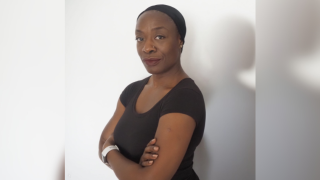The comments were made by Jan Söderström, head of Ericsson’s D-15 innovation lab, which recently hosted the tech community event 5G Things.
Calling for open and interoperable capabilities across cloud and 5G, Söderström said collaboration was needed to agree frameworks for new services, among other areas.
He said: “The network is enabling a lot of innovation and many technology players right now are working in stealth mode to be “first” to that killer app. But what happens next? What is the route to market, how can we scale those technologies, and how can we ensure fair competition in future?
“The openness that is needed most right now is to get an agreed framework in place for new services, so we don’t get locked into a situation whereby there is only one technology vendor, one hyperscale cloud company, one service provider, et cetera,” he continued.
To ensure required levels of openness, Söderström said the connection between an application, the network platform and terminals must develop over the coming years “so we have flexibility and scale. For me, this is the core part of ensuring openness,” he explained.
“Then, of course we will also see more openness in the various levels of the stacks themselves – such as the top end of the stacks i.e. the innovation layer, but also ensuring openness within the network platform itself, to enable faster innovation on the basic infrastructure.”
Söderström isn’t the first to make such comments, however the observations are usually directed at the equipment developers themselves.
Last month, Capacity heard from Mattias Fridström, VP and chief evangelist at Telia Carrier, who said: “We all need to push the vendors quite hard. I fully understand it in their interests to keep their systems as they are, they sell licences and that is a way to make money.
“I understand that if we say, ‘make this a general system or I won’t pay you’, that isn’t what they want to hear. But at the end of the day there are so many other things they can sell to us. So, please help us in getting those orchestration tools out there,” Fridström continued.
Echoing similar concerns for the cloud market, Söderström highlighted new pitfalls in the build out of 5G use cases.
He said: “Most cloud vendors have built their business on an internal stack which they have designed themselves. Although they reuse some commercial components from the market and publish some open-source code to get the scale, the nature of the stacks can be very different which makes it difficult to develop and integrate multi-cloud solutions – something which will be critical to building out 5G use cases.”
Tackling the problem, Ericsson said it is combining the orchestration it offers from a service provider perspective with the different cloud providers to produce a “functioning solution”.
“We definitely foresee this being the model for the early 5G years, to produce a flawless experience for the user,” Söderström continued.
On the 5G tech race, Söderström said parallels are already emerging with the roll out of 4G LTE.
“I believe a lot of what happens next will depend on each market’s ambition to build and enable that critical base of 5G infrastructure, but also the agility and speed with which technology developers and service providers can scale new technologies across the market. To do that, it’s very clear to me that we have to bring the eco-system closer together. We must find new ways to collaborate and co-create.”





